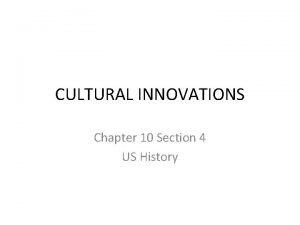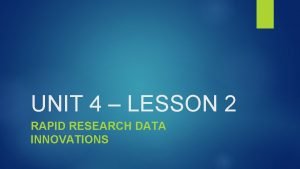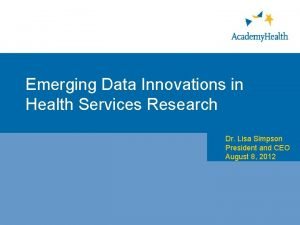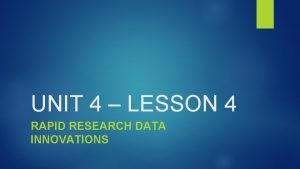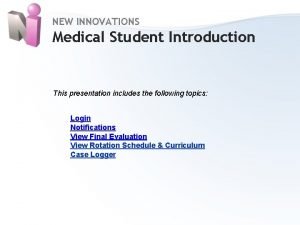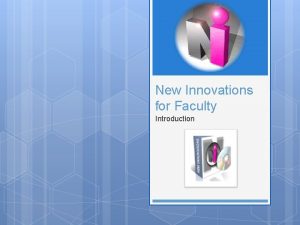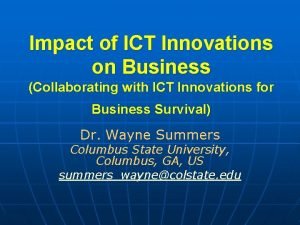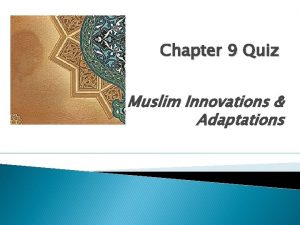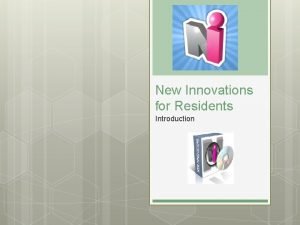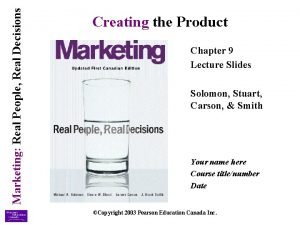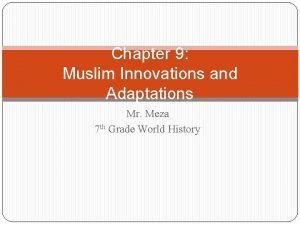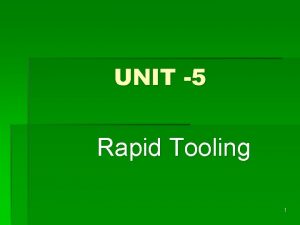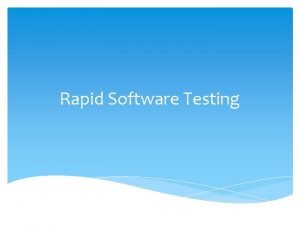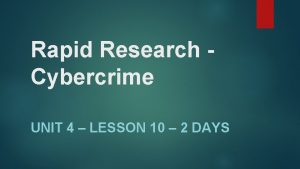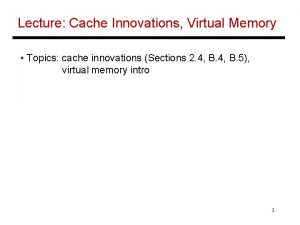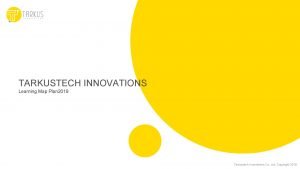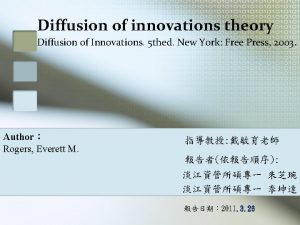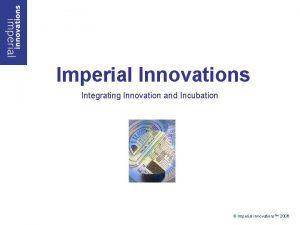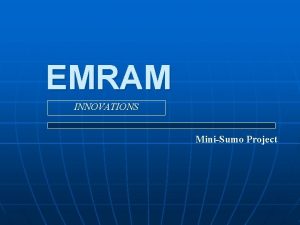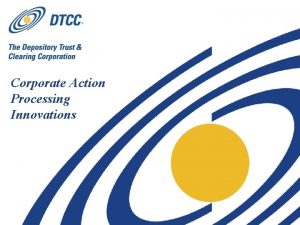UNIT 4 LESSON 4 RAPID RESEARCH DATA INNOVATIONS


















- Slides: 18

UNIT 4 – LESSON 4 RAPID RESEARCH DATA INNOVATIONS

VOCABULARY ALERT: One-pager - A business/corporate term for a one-page document that summarizes a large issue, topic or plan. Marketing people call this an elevator pitch – 2 minutes on an elevator

PURPOSE: Being able to research modern computing innovations and gain insight into how those innovations are using data is a key skill of computer scientists.

One of the questions I had from you last term was – will we ever get to have time to work on projects for an extended time. This term is all about doing just that, and it starts today with a small, 2 day project.

You will research a topic of personal interest and respond to questions about how that innovation produces, uses, or consumes data.

CAUTION: THE TOPIC YOU USE TODAY CANNOT – CANNOT BE USED FOR YOUR OFFICIAL, COLLEGE BOARD AP TEST PROJECT THAT YOU WILL TURN IN. SO DON’T PICK YOUR FAVORITE THING – SAVE IT FOR LATER THIS TRI!

VIDEOS TO HELP GENERATE IDEAS: YOU HAVE TWO VIDEOS IN CODE STUDIO TO WATCH: Data and Medicine - Video (6: 07) Computer Science is Changing Everything - Video (4: 33 NOTE: this video was also shown in Unit 1) I WILL LET YOU WATCH THOSE ON YOUR OWN.

WE WILL WATCH THIS VIDEO ALL TOGETHER: The Math Behind Basketball's Wildest Moves - Video (12 mins) and do the practice worksheet

One of the things that many modern innovations have in common is their use of data (often Big Data, but not always). To explore how innovations use data more in depth you will be completing a rapid research project on a “data innovation” of your choosing.

Get excited! This is your opportunity to dig deeper into a computing topic that has piqued your interest over the entire course. What kinds of things are you interested in? How does computing affect them? How is data used to make innovations you’re interested in actually work?

The project mimics some of the things you have to do for the Explore Performance Task and will be useful preparation. In particular the Explore Performance Task asks you to: Research a modern computing innovation. Explain how it uses, produces, or consumes data. This is exactly what you’ll be doing today!

Distribute: Rapid Research - Data Innovations - Activity Guide and Data Innovation One-Pager - Template and review as a class.

Day 1 - Choose Innovation, Read and Research Review Activity Guide and Rubric: At the beginning of the project, it is important that you review the one-pager template and rubric. You may assume that more is required of you than is actually the case for today and tomorrow’s project. In particular, you do not need to create your artifact yourselves, but it must still meet the requirements of this project. The written component is quite short. You probably have space for 100 -150 words per response.

DAY 1: Choosing Your Innovation: (20 minutes). You should not leave class after the first day without a topic in mind and ideally with some resources identified. Luckily, in choosing your topics, you will likely have begun to identify resources you can use in completing your project.

DAY 1: Conducting Your Research: This document is intended to serve primarily as a guide to you for identifying online sources of information. The skill you need to develop is identifying useful resources on your own and then synthesizing this information. Being presented with a structured way of doing this means you will have a model for how to complete your research when completing the actual Explore PT. The "Key Information to Find" highlights specific terminology from the Explore PT that you will benefit from having seen earlier in the course.

Day 2 - Prepare one-pager Identify a Visual: You need to identify a visual artifact (image, visualization, drawing, chart, video, interview, etc. ) that gives some additional insight into their innovation. Students DO NOT need to make this visual yourselves for this 2 day project. The goal is to effectively use a visual to communicate information about a technical topic.

DAY 2: Complete One-Pager: You should find this aspect of your project most familiar. The prompts are similar in style and content to prompts you have already seen. You need to have clarity in your writing, and everything must fit on a single page. If you have responded completely to each of the prompts, it is fine to write less.

Check your work with the rubric. Show your work to other teams. Turn in your one pager. No homework today!
 Chapter 8 lesson 4 cultural innovations
Chapter 8 lesson 4 cultural innovations Video data innovations
Video data innovations Health data innovations
Health data innovations Code.org unit 4 lesson 4
Code.org unit 4 lesson 4 Right triangle trigonometry examples
Right triangle trigonometry examples List various rapid prototyping data formats
List various rapid prototyping data formats Unit 6 review questions
Unit 6 review questions Russian empire military 1450 to 1750
Russian empire military 1450 to 1750 Sls login
Sls login New-innov
New-innov Lucent technologies chip
Lucent technologies chip Innovations foresight
Innovations foresight Ict innovations for business
Ict innovations for business Why was polo a popular sport among wealthy muslims
Why was polo a popular sport among wealthy muslims New innovations duty hours
New innovations duty hours Next level innovations
Next level innovations Marketers classify innovations based on their
Marketers classify innovations based on their Almmii
Almmii Muslim innovations and adaptations
Muslim innovations and adaptations
